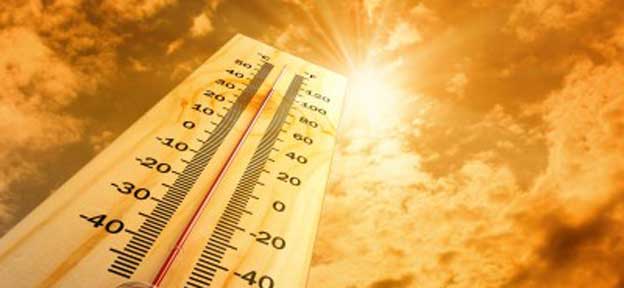
Suppose you live in an area where extreme heat is common - like here in the Phoenix, Tempe and Chandler, Arizona area. You only have to glance around to see the aftermath. Mailboxes are melting, heat-related illnesses are more common, and roadways are buckling. So just imagine what all that heat is doing to your car. In most owners manuals the manufacturer gives two sets of vehicle maintenance requirements, normal and "severe service" conditions.
If you live here in the Phoenix area, congratulations! Severe service guidelines apply to your vehicle. The heat can be brutal but with a few extra precautions your car can live a long and healthy life. Battery problems are generally associated with the winter months. But believe it or not, extreme heat can be worse for a battery than the bitter cold. Vibration and heat are a battery's biggest adversaries and can lead to a complete breakdown. Granted, there's not much to be done about the heat, but you can double-check to ensure your battery is properly mounted to help minimize vibration. Additionally, battery fluid evaporation can prove to be a problem. This in turn can cause corrosion on the connections and terminals. Be sure to clean any build-up on those terminals as well as the cable clamps, and check to see that the latter are tight enough to prevent movement. If the battery is older than three years, it's probably a good idea to have one of our auto repair technicians test it and see how much life it has left. If it turns out the battery needs to be replaced, it can be done here on location in just a few minutes. The engine itself faces a lot of stress in extreme heat, too, so it's important to keep up with maintenance. The cooling system should be flushed and the engine coolant replaced according to your manufacturer's instructions to minimize stress as much as possible. In between flushes, check the coolant levels in the overflow reservoir regularly. (
REMEMBER - Don't take off the radiator cap while the engine is still hot! Coolant still under pressure can cause severe burns!) It's imperative that other engine fluids be kept in check throughout the summer as well. They serve to cool the engine in addition to working as lubricants by carrying excess heat away. With low fluid levels, that cooling effect is diminished and overheating is much more likely. Rubber cooling system parts can also suffer from deterioration in extreme heat. Regularly check drive belts and hoses for any signs of degradation. Worn parts fare far worse in these conditions and are better off being replaced.

Make sure your transmission fluid is checked every time you have an oil change. We always check this and can alert you to any problems early on before it becomes serious. Driving with under-inflated tires is never a good idea. Period. It can cause the rubber to overheat and increases the chances of a blowout. This risk increases when the road temperatures are exceptionally hot. Tires need to be checked after the car has been sitting a while and should be kept at the manufacturer's recommended PSI - not what's marked on the sidewall. At the same time, it would be wise to assess the treads for hints of uneven wear and making sure they're of an adequate depth. [caption id="attachment_883" align="alignright" width="150"]

Qualified Air Conditioning Service[/caption]Don't neglect your vehicle's air conditioning system - and not just because it contributes to your own comfort as well as your passengers. If you notice the A/C is not sustaining the interior environment like it used to, have the refrigerant level checked. It may be low. It might also mean that there's some other problem, in which case you'll want to have one of our ASE certified technicians take a look. Today's systems have a filter to block outside debris, so it's possible this may need replacing as well. The heat can also wreak havoc with your car's paint and upholstery. Everyone knows how hot vehicles can get inside, and that heat can lead to cracking, fading, and peeling with interior materials. Likewise, constant direct sunlight can cause the exterior paint, plastic trim, rubber, and clear coat to do the same. The best way to resolve this issue is to park inside a garage. If one is not available, toss a cover over the vehicle. This will keep direct sunlight from hitting the interior. At the same time, it will protect the exterior against acid rain, bird droppings, and other contaminants. Waxing the car can help protect the paint, as can applying a carnauba-based wax (such as Turtle Wax) and liquid sealant. Use some low-gloss protectant to offer some protection to interior surfaces. With the right care your car can be maintained in tip top running condition, even if you're in a severe service climate, like here in the Phoenix, Tempe, and Chandler area. If you're in doubt about any of the above mentioned issues with your vehicle, make an appointment today for a free inspection at our auto repair shop in Tempe by calling

or filling out the form on this site.
Book An Appointment